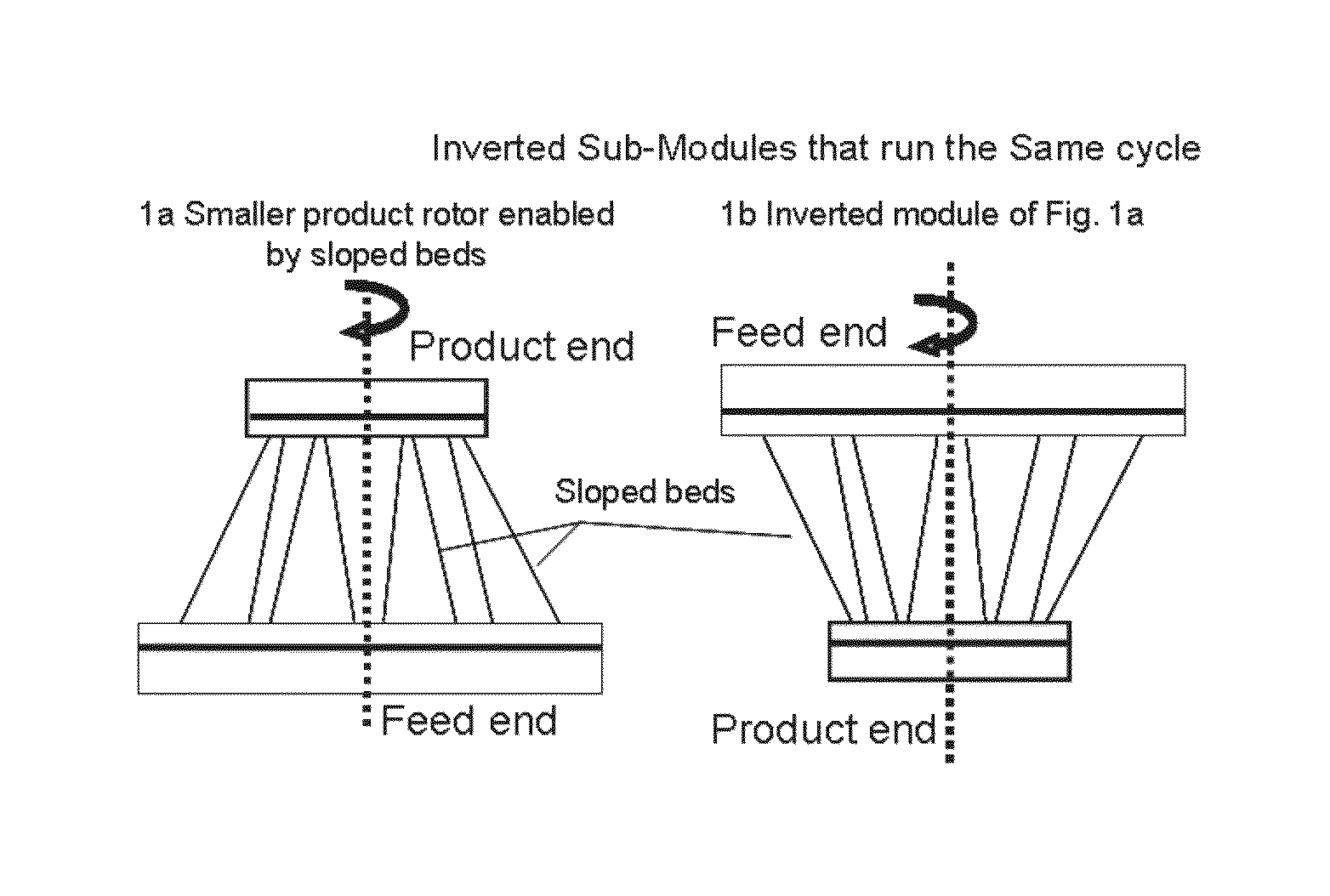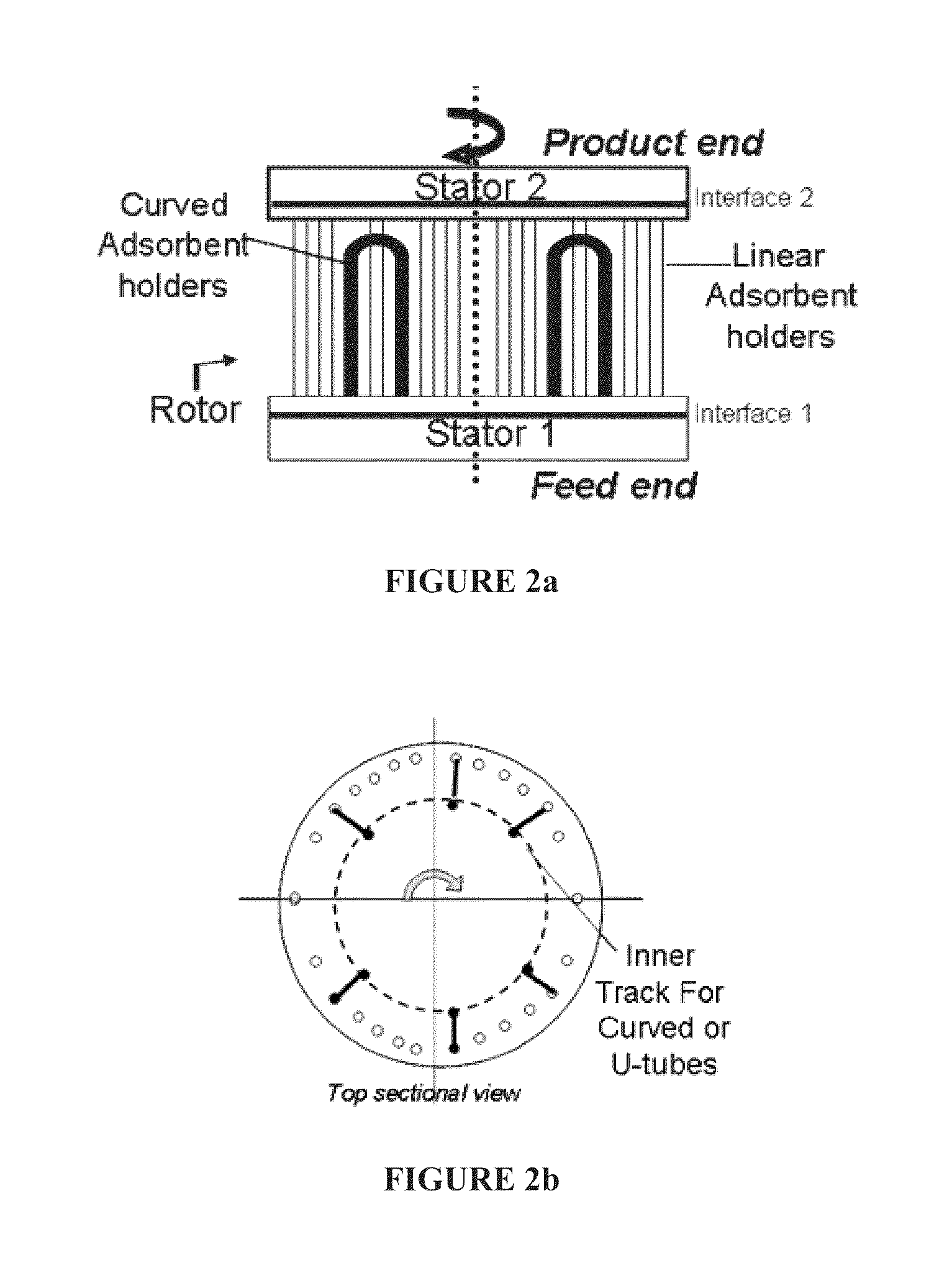Increasing scales, capacities, and/or efficiencies in swing adsorption processes with hydrocarbon gas feeds
a technology of hydrocarbon gas feed and adsorption process, which is applied in the direction of separation process, dispersed particle separation, chemistry apparatus and processes, etc., can solve the problems of increasing processing costs, relatively few steric separation processes have been commercialized, and the state of the art of large scale rapid cycle tsa units is considerably less advanced. , to achieve the effect of increasing efficiency and high-capacity
- Summary
- Abstract
- Description
- Claims
- Application Information
AI Technical Summary
Problems solved by technology
Method used
Image
Examples
example 1
[0086]As discussed above, the various views of FIG. 1 show the use of circumferentially sloped adsorbent beds to allow more efficient use of rotor space. In bulk separation (e.g., CO2 from methane), there can be a relatively large change in gas flow velocity / flux towards the product end during the feed step due to substantial adsorption. To ensure that flow velocity / flux remains within acceptable values, e.g., remains relatively constant, a reduction of adsorbent bed cross-sectional area can be useful, or in some embodiments preferred, for proper operation of bulk separation processes.
[0087]In FIG. 1, this reduction in adsorbent bed cross-sectional area from feed end to product end can alternately be expressed in terms of the decreasing size / diameter from the feed end rotary valve to the product rotary valve. According to FIG. 1d, these changes in bed cross-sectional area and rotary valve diameter from feed end to product end can be exploited to co-operatively run multiple (in this ...
example 2
[0091]The various views of FIG. 2 show an embodiment based on modifying a commercial RCPSA module to incorporate a curved tubular adsorbent bed within a rotating valve adsorbent module assembly containing at least a first and a second rotor-stator interface and otherwise linear adsorbent containers disposed between them.
[0092]Though in this configuration of FIG. 2a the first (feed end) and second (product end) rotary valves are roughly the same diameter, the configuration of the curved adsorbent holders creates a situation where the number of rotating plate openings in rotor of the second interface is not equal to the number of the inlet and outlet openings of the adsorbent holders, because the curved (u-shaped) adsorbent holders direct some product effluent back toward the feed end, though on an inner track radially displaced from the linear adsorbent holders. Alternately, the radial displacement of the curved (u-shaped) adsorbent holders can be on an outer track, relative to the l...
PUM
 Login to View More
Login to View More Abstract
Description
Claims
Application Information
 Login to View More
Login to View More - R&D
- Intellectual Property
- Life Sciences
- Materials
- Tech Scout
- Unparalleled Data Quality
- Higher Quality Content
- 60% Fewer Hallucinations
Browse by: Latest US Patents, China's latest patents, Technical Efficacy Thesaurus, Application Domain, Technology Topic, Popular Technical Reports.
© 2025 PatSnap. All rights reserved.Legal|Privacy policy|Modern Slavery Act Transparency Statement|Sitemap|About US| Contact US: help@patsnap.com



